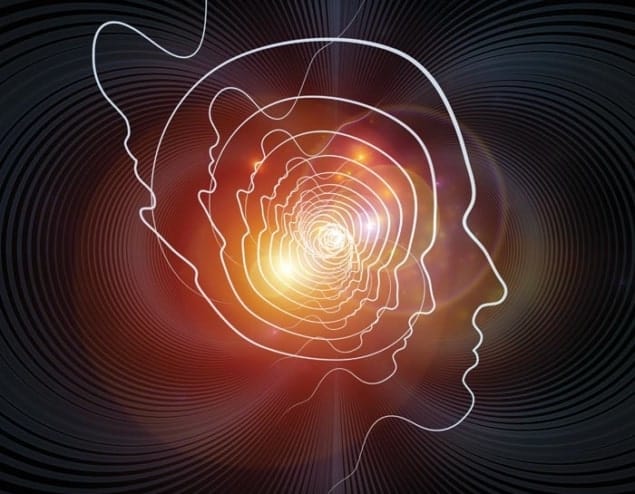Seth Lloyd reviews Physics in Mind: a Quantum View of the Brain by Werner Loewenstein

The book Physics in Mind: a Quantum View of the Brain certainly aims high. Written by the eminent biophysicist Werner Loewenstein, its goal is nothing less than a theory that explains our sense of conscious existence, built from the bottom up. Remarkably, Loewenstein’s arrows of explanation hit their target almost all the time, even though the promise implied in the book’s subtitle remains tantalizingly just out of range.
This book is a fantastic journey for any reader, but especially for a physicist. In Loewenstein’s account, life is a delicate dance between the bits of information and quantized chunks of energy that drive all biological processes. Accordingly, he takes us on an intellectual rollercoaster ride through the microscopic world of signalling molecules, autocatalytic sets, DNA, RNA, natural selection and the electromechanics of cell membranes – before culminating in an account of quantum computing and the role of quantum mechanics in the brain.
The book begins with the relationship between the human sense of time and the abstract concept of time in physics. An exposition of the various “arrows of time” – perceptual, thermodynamic and cosmological – leads up to a discussion of the basic mechanisms of molecular signalling in living systems. Loewenstein takes as his central model Maxwell’s famous demon (see April pp36–39), which gets information about the microscopic motions of molecules and uses that information to reduce entropy. The author encourages the reader to think of all molecular information processing in demonic terms, since a wealth of biological processes – the function of ion channels, photosynthesis, the detection of light in the eye, the absorption of scents by receptors in the nose and many more – all operate via the interplay between information and energy at the microscopic scale.
Loewenstein’s choice to describe biological information processing in terms of “demons” that deal in information and energy is a wise one. By providing a central metaphor for the microscopic mechanisms of biological signalling, he supplies a unified picture of how the brain gathers to it the material of sensation. Our eyes and nose, for example, offer us very different senses of our surroundings; but when one describes them in terms of the dance of information and entropy, it becomes clear that they function in very similar ways. A single photon passing through the lens of the eye excites a molecule of rhodopsin, pushing open an ion channel that excites a neural signal. A single molecule locks into an odour receptor in the nose, allowing charge to flow in a way that again excites a neural signal. The steps in each dance are different, but the results are the same: a slight difference in our surroundings is amplified into a perceived difference in our brain.
At this point, the book transits from the solid ground of molecular biology to the more speculative territory of human perception. Here, too, Loewenstein exhibits sure hands. He admits that we don’t know just how conscious awareness works, but gives hints and clues to the evolutionary origins of perception, and to the way in which the brain integrates the products of the sensory apparatus. He draws on the recent comprehensive investigations of how neural circuitry functions to recognize patterns and extract correlations from sensory data. He speculates on the beginning of self awareness and on the role of perception of space and time. His arguments on language, thought and computation are fascinating, and almost persuade the reader that the age-old problems of human consciousness might be solvable.
The dazzling diversity of topics and the rapid pace of the brilliant exposition are overwhelming: at the end of every chapter, the reader has to stop to catch breath. In general, the author’s skill in unifying the array of molecular mechanisms under the single theme of information processing pulls us through. However, by the end of the book, so much knowledge has been imparted that our brains would indeed need to be quantum computers to assimilate it all.
Yet ironically for a book whose subtitle is “a quantum view of the brain,” it is just at the application of quantum mechanics to neural processes that the book stumbles. The author provides a spirited exposition of quantum mechanics and quantum computing, but when it comes to applying quantum theory to the brain itself, Loewenstein hems and haws. While he speculates on the possible role of quantum weirdness such as quantum superposition and entanglement in consciousness, in the end he is too good a scientist to be taken in by claims that wavefunction collapse plays a role in mental processes. Indeed, in the final chapter he admits that quantum mechanics doesn’t seem to play much of a role in the brain at all. It’s a relief not to be subjected to nonsensical claims of entangled neurons, but it does reveal the book’s subtitle to be nothing more than a tease.
Loewenstein is an engaging writer, one who spices his prose with elaborate wordplay, assonance, internal rhymes, puns, metaphors and quotations. All those verbal high jinks go to good use, put into the noble service of communicating hard stuff in a comprehensible fashion, but it does make for a book that could do with a few more monosyllables. Still, in the final analysis, this is a ripping good read. Each chapter brings novel insights into the fundamental workings of life. Those who buy their ticket and take the ride will emerge breathless, but enlightened.
- 2013 Basic Books £19.99/$28.99hb



